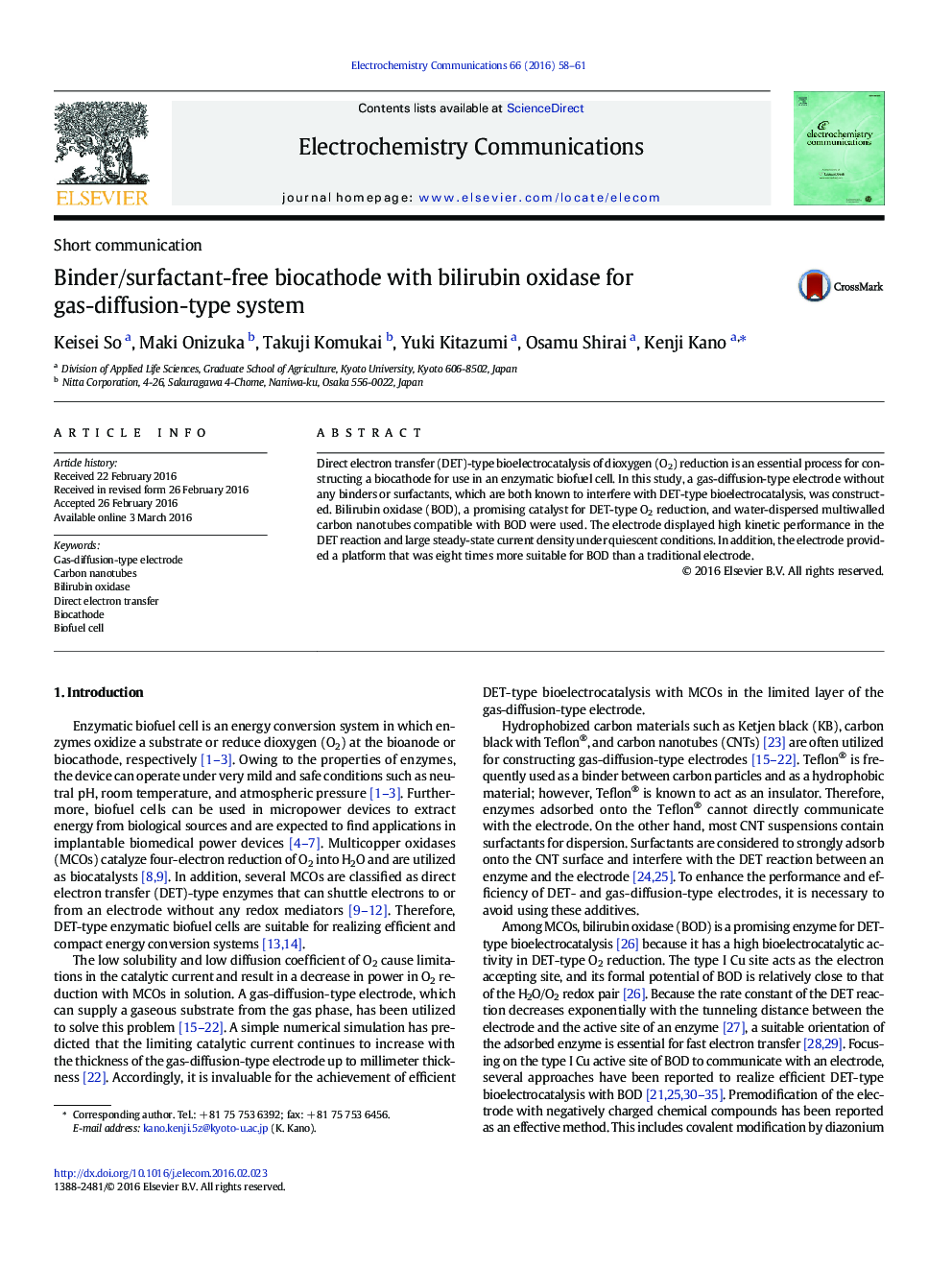| Article ID | Journal | Published Year | Pages | File Type |
|---|---|---|---|---|
| 178684 | Electrochemistry Communications | 2016 | 4 Pages |
•A gas-diffusion-type electrode without any binders or surfactants was constructed.•Improvement in the interfacial electron transfer of BOD was realized.•Improvement in the steady-state catalytic reduction current density was realized.•We created highly efficient platforms for BOD in DET-type bioelectrocatalysis.
Direct electron transfer (DET)-type bioelectrocatalysis of dioxygen (O2) reduction is an essential process for constructing a biocathode for use in an enzymatic biofuel cell. In this study, a gas-diffusion-type electrode without any binders or surfactants, which are both known to interfere with DET-type bioelectrocatalysis, was constructed. Bilirubin oxidase (BOD), a promising catalyst for DET-type O2 reduction, and water-dispersed multiwalled carbon nanotubes compatible with BOD were used. The electrode displayed high kinetic performance in the DET reaction and large steady-state current density under quiescent conditions. In addition, the electrode provided a platform that was eight times more suitable for BOD than a traditional electrode.
Graphical abstractFigure optionsDownload full-size imageDownload as PowerPoint slide
